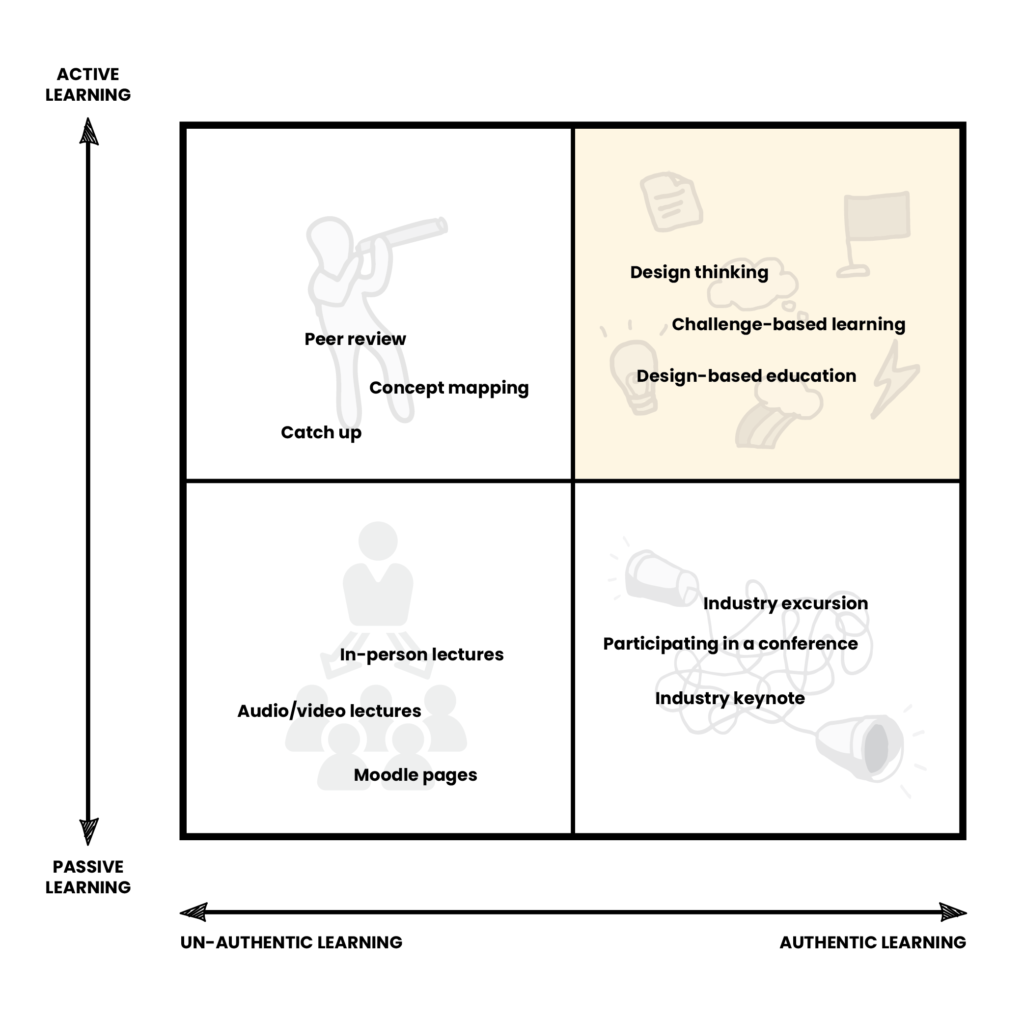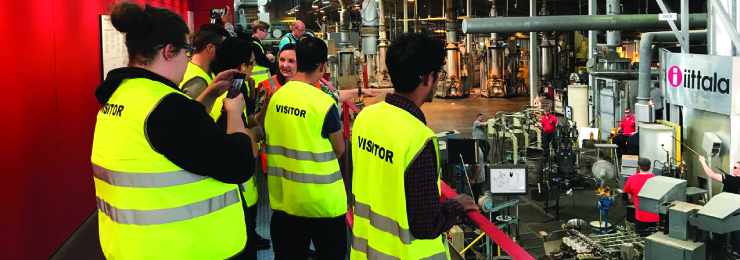HAMK Design Factory has been described as an interdisciplinary product and service design and learning platform uniting students, teachers, researchers, and industry. What does this mean in terms of learning and how is it different from traditional teaching and learning activities applied in HAMK? To position learning in HAMK Design Factory, the RUN-EU Pedagogical Guide for Short Advanced Programs and Joint Programmes implementation serves as a good baseline.
In the RUN-EU Pedagogical Guide for Short Advanced Programs and Joint Programmes implementation several teaching and learning activities are described including deep and active learning, competence-based learning, collaborative learning, student-centered teaching, and well-being in studying.
Deep and active learning engages students in learning that is productive, gives enough time to learn and demands activity throughout the course or programme. Collaborative learning facilitates students’ team learning, helps students to interact in interdisciplinary teams, builds collaboration between teachers and supports students making connections to industry.
Learning in HAMK Design Factory
Put simply, teaching and learning in HAMK Design Factory can be conceptualized as a combination of collaborative learning and active learning, where learning takes place in authentic environments, solving the real-life problems of industry in interaction with the stakeholders connected with the problem. In the Design Factory implementations interdisciplinary teams are formed, where each team consists of students from at least two Degree Programmes from HAMK or partner educational institutions. This enables peer learning of knowledge, skills, methodologies, and theories from different disciplines to take place during the projects. In each project, the student teams benchmark existing solutions and research the problem from the user perspective, especially trying to discover the needs and goals of the user of the solution to be developed during the project. Active learning supports the exploration of problem space, where accountability is build-in for individual and teamwork. For example, students document individual interviews of users and analyze the results as a team. This combination is illustrated with the following 2×2 matrix. The matrix has two main dimensions: active learning and authentic learning and describes some examples representing each category.

Un-authentic learning refers to situations, where the problems that the students aim to solve are not related to the real-life problems of industry and where the student does not have an opportunity to interact with the industry and relevant stakeholders of the problem. Passive learning refers to situations where a student is digesting content passively delivered as in-person lectures or online learning material, such as, books, Moodle pages, recorded video, or audio lectures.
Examples of authentic but passive learning include in-person lectures or keynotes by industry, going for an excursion into some company, trade fair or participating in a conference. Examples of active but un-authentic learning include catch up’s during lecture, where the lecture is paused for students to talk with classmates about any points that are unclear, and peer review of assignments done by other students.
Finally, active and authentic learning examples include design thinking, design-based education and challenge-based learning. Diili is an example of challenge-based learning, where students create solutions to the challenges given by companies. International Product Development Project is an example of design thinking, where interdisciplinary student teams explore the problem and develop a solution for industry challenge in interaction with the stakeholders connected with the problem.
Positioning courses or programs in the presented matrix does not mean that they need to be limited to a single box, e.g., only active and authentic learning activities are offered, but that the focus and aim of the course or programme are oriented in that direction. In reverse, perhaps you cannot call a course or program to follow active and authentic learning if the only learning activities are lectures and Moodle pages. This positioning matrix can also be used by any course or programme in planning the teaching and learning activities and reflecting how the implementation turned out to be in practice.
Authors
Jari Jussila & Sanna-Maaria Mäkelä




